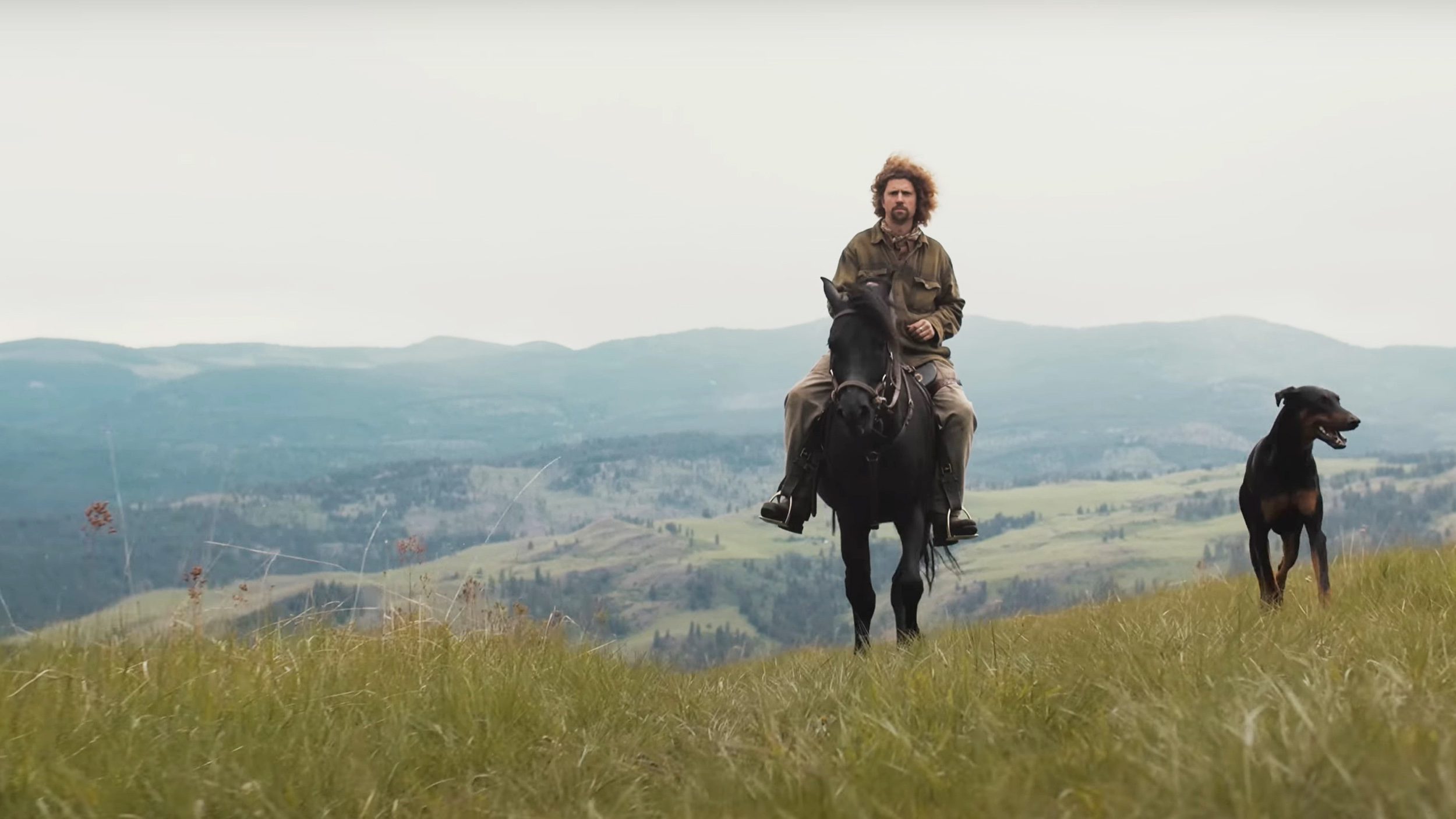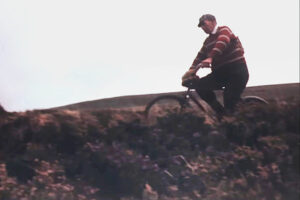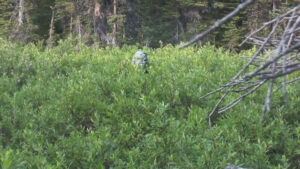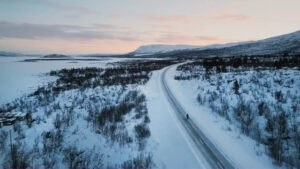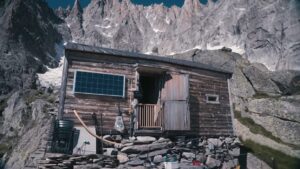Daniel Curry grew up poor in a single-parent household and was home alone a lot.
“Although not alone. Home with animals,” Curry says, pointing to these hard days as the genesis of his bond with the natural world.
That bond continued through Curry’s early adulthood as he worked with wolves in captivity. Those formative early years interacting with one of North America’s most amazing — and controversial — predators laid the foundations for Curry’s current profession.
He’s a range rider for Washington State, tasked with roaming the valleys and mountains that comprise much of the state. His mission? Protect cattle from wolves.
And protect wolves from people.

Some of Curry’s charges. The other animal he protects? Wolves. Photo: Screenshot
Seeking a middle ground
This unique position is the focus of a recent short work from Patagonia Films. Range Rider follows three seasons in Curry’s life as he, his horses, and his trusty dogs attempt to find a middle ground between wolf conservationists and the multi-generational ranching operations that also call the region home.
The film strikes at the heart of one of the most densely woven conservation issues plaguing American public lands. Ranchers have long held the right to graze cattle on public lands, and many small and mid-sized operations have been doing so for generations. So when land management agencies begin rethinking land use — i.e., preserving more of the land for wild species by limiting grazing — those same ranchers take umbrage.

Curry on the beat. Photo: Screenshot
“People like to give them fancy titles, but a wolf is a wolf, and they are killing machines,” says Len McIrvin, one of the Washington ranchers interviewed for the film. “And if we were able to take a shot at them whenever we see them, cattlemen would be able to take care of their own problems.”
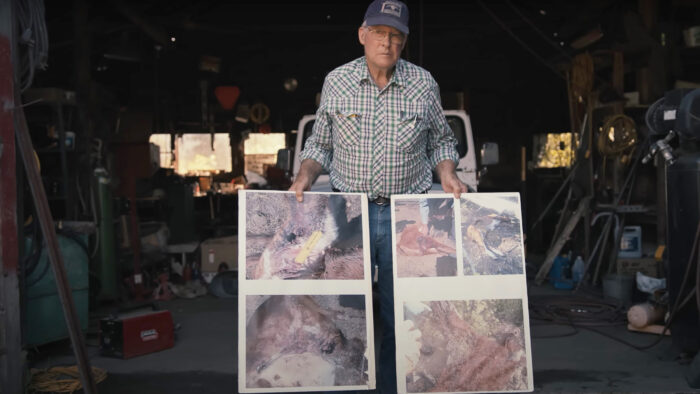
A rancher holds posters showcasing the cattle he’s lost to wolves on public land. Photo: Screenshot
Into this mindset wades Curry, a skilled horseman and tracker attempting to synthesize old-school Western sensibilities with a modern conservation mindset. He was the first range rider on Washington State’s payroll, and he takes his responsibility seriously.
‘A box of bullets is what I know’
“A lot of the ranchers out here are having a hard time accepting wolves on the landscape. ‘I can’t have them out there eating my cows, so a box of bullets is what I know. That’s what my grandpa knew, and that’s what I’m gonna do,’ ” Curry says, tapping into a mindset held by many of the ranchers he works closely with. “And a lot of that generationally ingrained mentality still exists today because no one has taken the time to offer a better solution.”
Ranchers in the area often put pressure on the Washington Department of Natural Resources to mitigate the wolves preying on cattle grazing public land. The DNR responds by tracking and shooting wolves, often from helicopters. As the Washington DNR is also tasked with protecting and fostering the Washington wolf population, this policy often outrages conservationists and local hunters alike.

Curry uses non-lethal methods, such as his very presence, to dissuade wolves from preying on cattle grazing on public land. Photo: Screenshot
Curry, as he says, is offering a better solution. According to proponents of the range rider program, his mere presence on the public lands used by cattle grazers dissuades the wolves — making it uncomfortable for them to hunt cattle grazing areas. He scouts and makes notes, sets up game cameras, and roves endlessly on horseback. And while shepherds throughout history have traditionally killed predators, his dissuasion methods are non-lethal.
A difficult mission
As the film progresses, it becomes evident just how difficult Curry’s lifestyle is. Funding is sporadic, and he has to live cheaply and scramble for non-profit grants to keep his work going. He’s also regularly accosted at gas stations and in supermarkets by members of the community who don’t approve of his mission. Sometimes, irate ranchers even show up at his home in the middle of the night. It takes a toll.
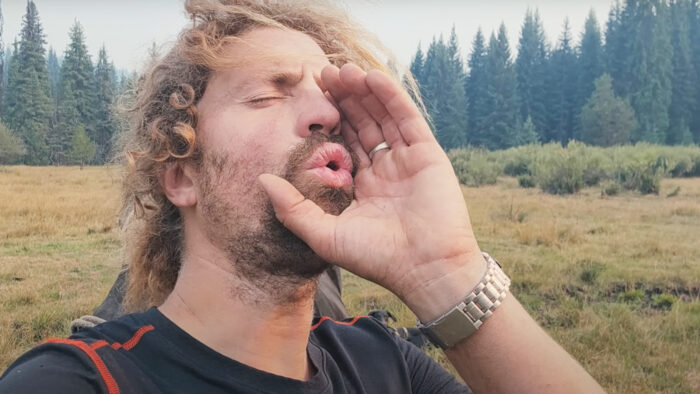
Curry howls at wolves. Photo: Screenshot
“I’m at the point now where I’m really gauging personally, ‘is this something that [I] still really want to do and believe in,'” he says, with pain and weariness evident on his face.
Gorgeously shot with a painterly eye, Range Rider makes full use of drone technology to provide exquisite, well-composed aerial footage of Washington landscapes and ranching operations alike. It’s a film that wouldn’t have been possible just 15 years ago, and an important one — both for the quiet beauty it displays and for the message of hope and compromise (quixotic though it might be) it ends with.
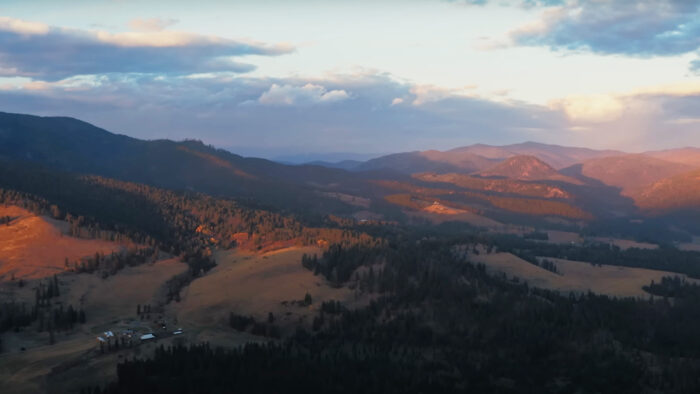
The cinematography in ‘Range Rider’ is one of its best features. Photo: Screenshot
Both sides now
“So I used to think the best solution from my ignorant perspective was just not to have ranching on public lands. And now I have a connection with the ranching community out here. I had never shook hands with a rancher, I had never watched how hard they work, I had never known a family like I do now. It’s a connection that we are lacking in so many ways,” Curry notes towards the end of the film as he huddles around a campfire, trying to ward off the autumn chill.
“You can see it all over the world. The wars we fight, the way we lump each other into categories. We can maybe stop looking at each other as Democrats and Republicans, find common ground that we tend not to look at. Sometimes I think we’re afraid that if we admit there’s another way, or that you don’t have to look at life the way that you have been, it’s a failure.
“And that’s not for me, at least.”
